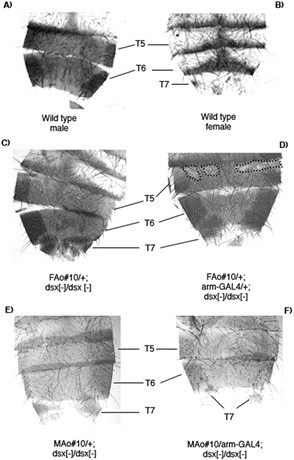Drosophila Abdominal Morphology Analysis Service
At CD BioSciences, we specialize in providing comprehensive solutions for Drosophila research. Our Drosophila abdominal morphology analysis service is designed to assist researchers in gaining valuable insights into the intricate abdominal characteristics of Drosophila specimens. Whether you're conducting genetic studies, developmental biology research, or investigating the effects of environmental factors on morphology, our service is tailored to meet your specific needs.
Introduction to Drosophila Abdominal Morphology
Research into Drosophila abdominal morphology covers phenotypic variations in its components like segments, cuticle plates, and genitalia. And Drosophila abdomen has obvious morphological differences, the abdomen of female Drosophila is longer and thinner than that of male and has ovipositor ducts, while the abdomen of male Drosophila has fertilization sacs. Additionally, the Drosophila abdomen undergoes morphological changes during many developmental phases, including growth, development, and mutation.

Fig.1 Morphological analysis of the abdomen of Anastrepha dsx transgenic Drosophila flies. (Alvarez M., et al. 2009)
For deciphering and gaining a full understanding of the abdominal characteristics of Drosophila, the researcher typically used the following methods.
- Naked eye observation: Directly observe the morphological characteristics of the abdomen of Drosophila, such as the size, shape, color and stripes of the abdomen.
- Microscopical examination: Examine the tissue make-up and organ morphology of the Drosophila abdomen under a microscope.
- Live Imaging: Monitor the developmental processes and morphological changes in the abdomen in real-time.
- Micro-Computed Tomography: Obtain three-dimensional images of the Drosophila abdomen, providing a comprehensive view of its morphology.
Our Services
The Drosophila abdominal morphology analysis service is designed to provide comprehensive and detailed assessments of the abdominal structures in Drosophila specimens. CD BioSciences' team of expert technicians employ state-of-the-art imaging and analytical techniques to deliver accurate and insightful data. Specifically, our service includes but are not limited to:
-
Segment Lengths Analysis
Obtaining detailed measurements of individual abdominal segments, aiding in the study of segmentation genetics and developmental processes.
-
Morphological Anomalies Analysis
Identifying and analyzing any morphological anomalies or variations, to delve into the genetic basis of abnormalities and potential functional implications.
-
Pigmentation Patterns Analysis
Exploring the intricate pigmentation patterns of Drosophila abdomens, contributing to your understanding of evolutionary biology and genetic expression.
-
Size and Shape Analysis
Gaining insights into the variations in abdominal size and shape among different Drosophila strains, to facilitate comparative studies and potential genotype-phenotype correlations.
Want to Learn More?
When you choose CD BioSciences for your Drosophila abdominal morphology analysis, you can rest assured that you will receive top-notch service, reliable data, and expert support throughout your research journey. Our goal is to contribute to the advancement of Drosophila research by empowering researchers with the tools and insights they need to make groundbreaking discoveries. Contact us to learn more about how we can support your research goals.
References
- Alvarez M, Ruiz M F, Sanchez L. Effect of the gene doublesex of Anastrepha on the somatic sexual development of Drosophila. PLoS One, 2009, 4(4): e5141.
- Ziabari O S, Shingleton A W. Quantifying abdominal pigmentation in Drosophila melanogaster. Journal of Visualized Experiments, 2017 (124): e55732.
For research use only. Not intended for any clinical use.
Related Services
